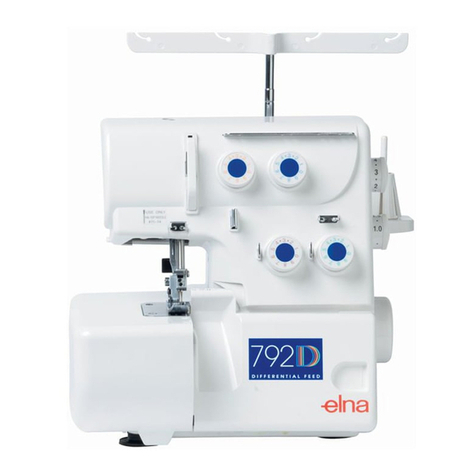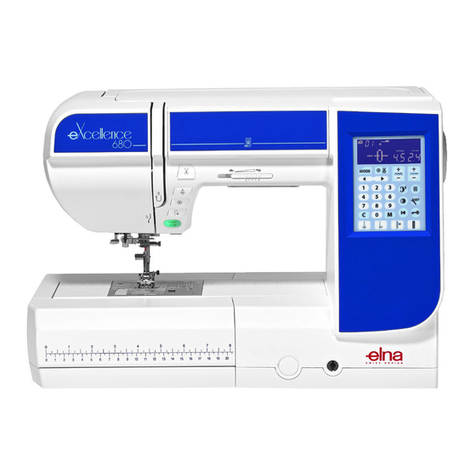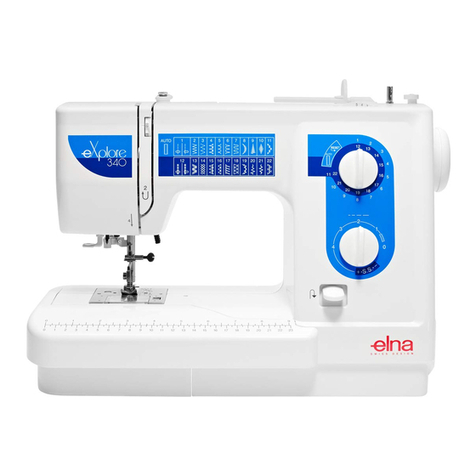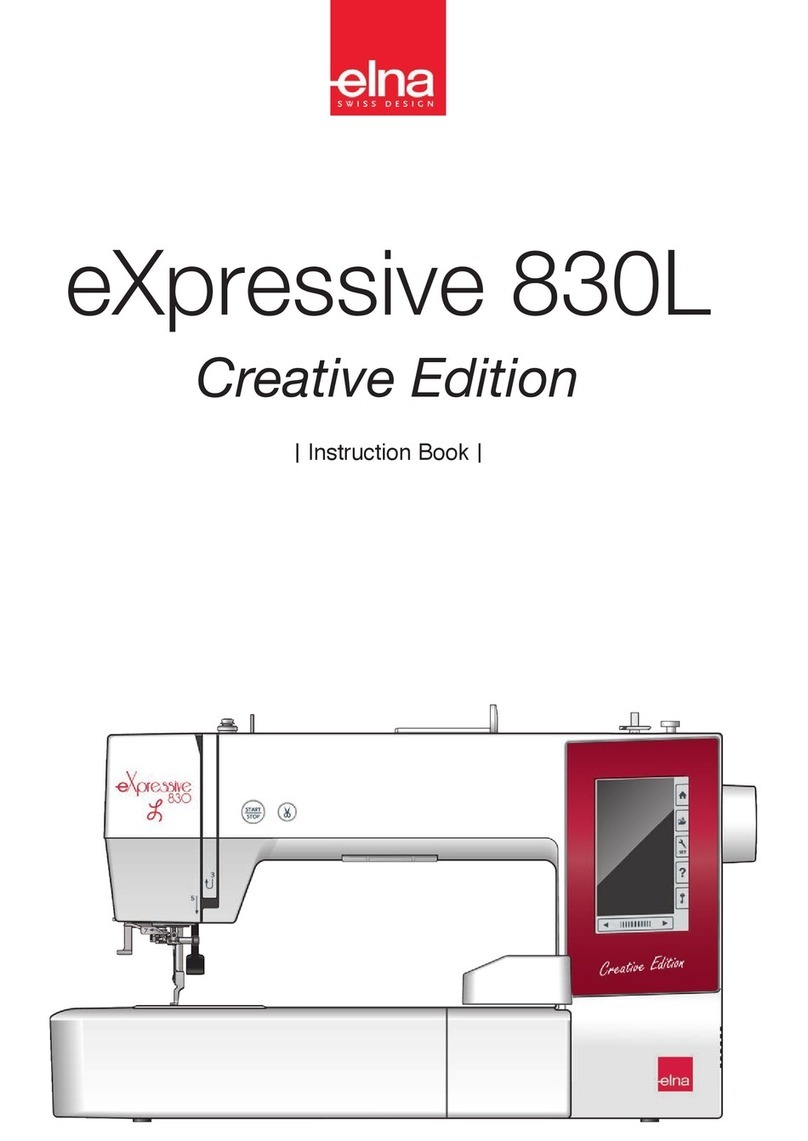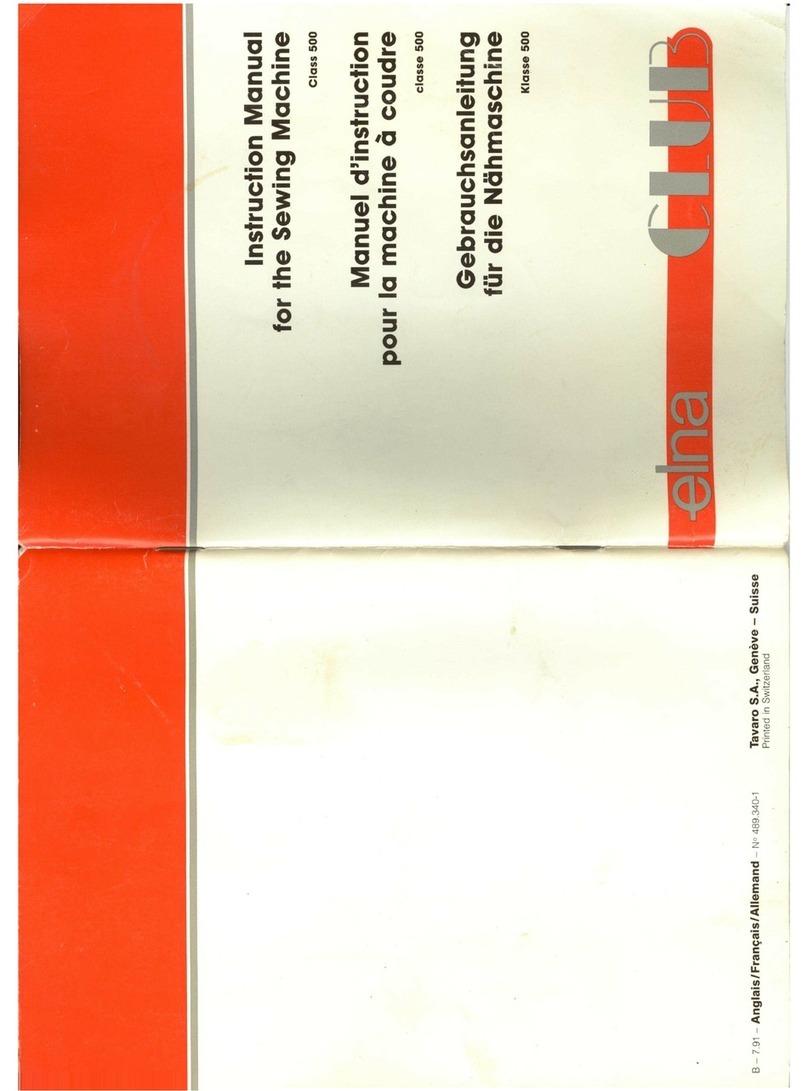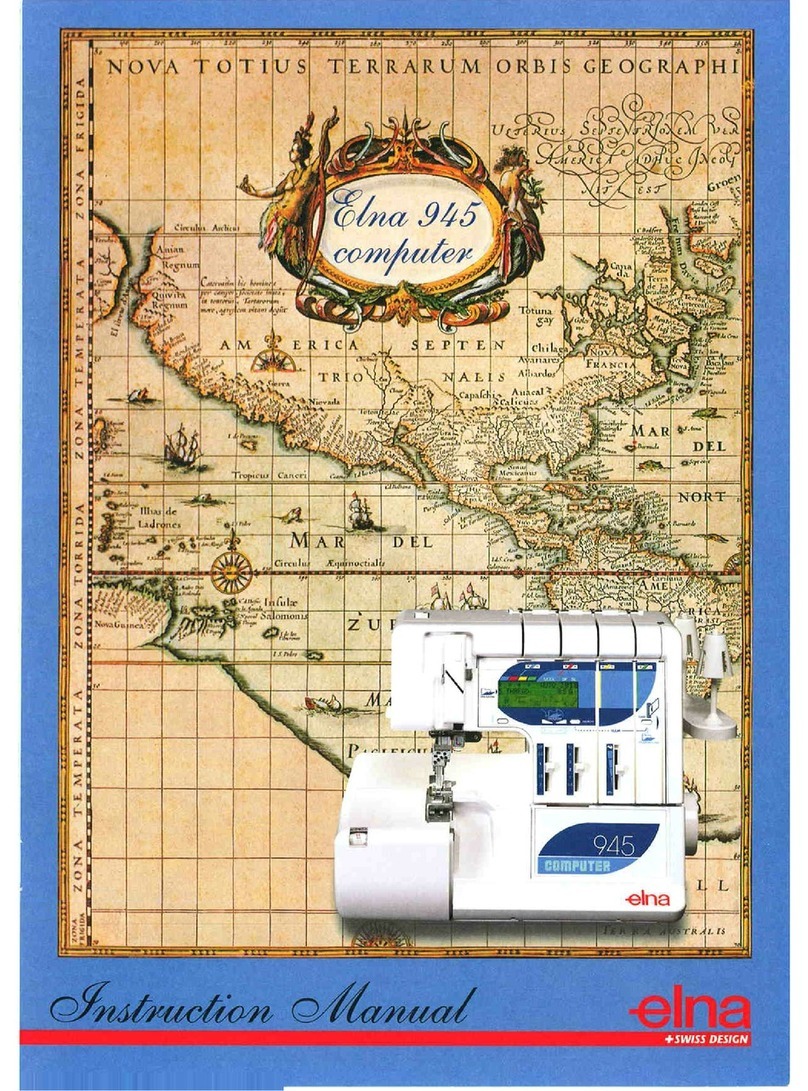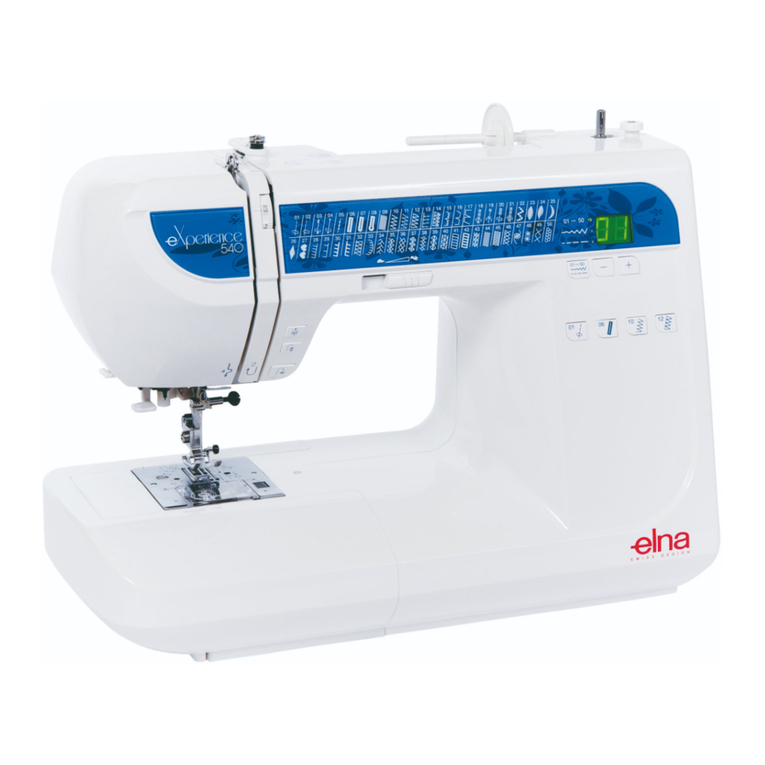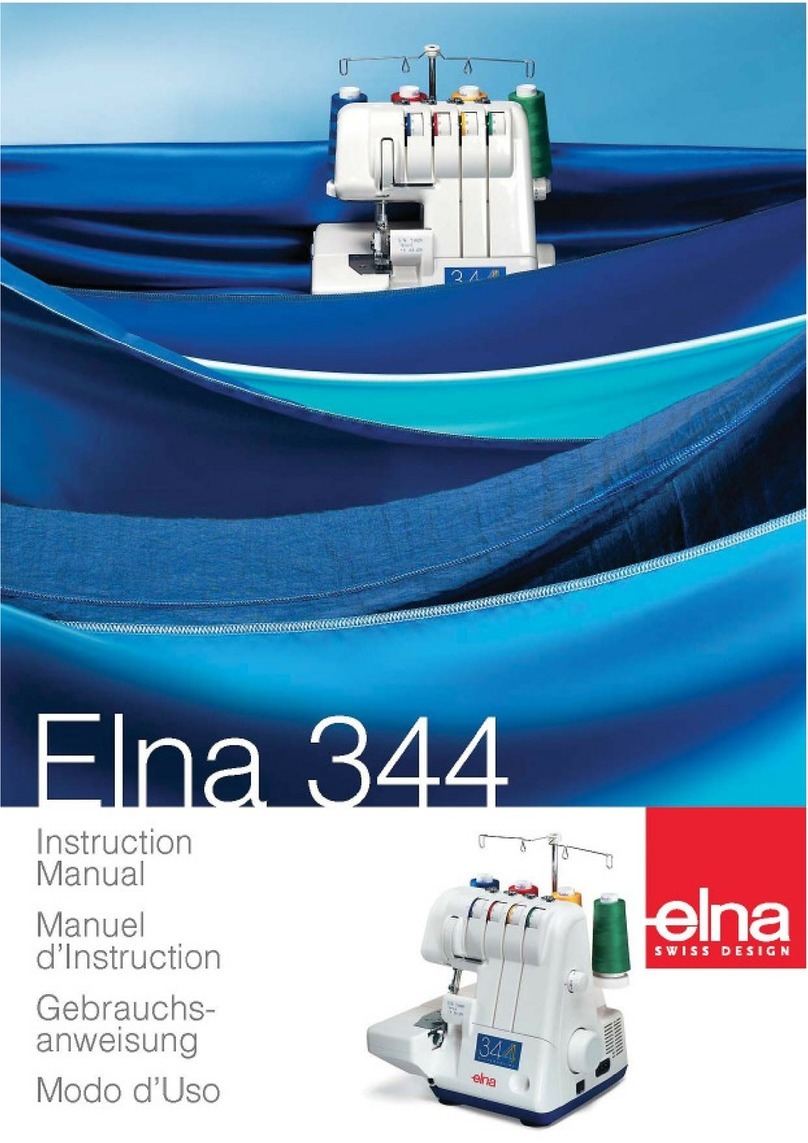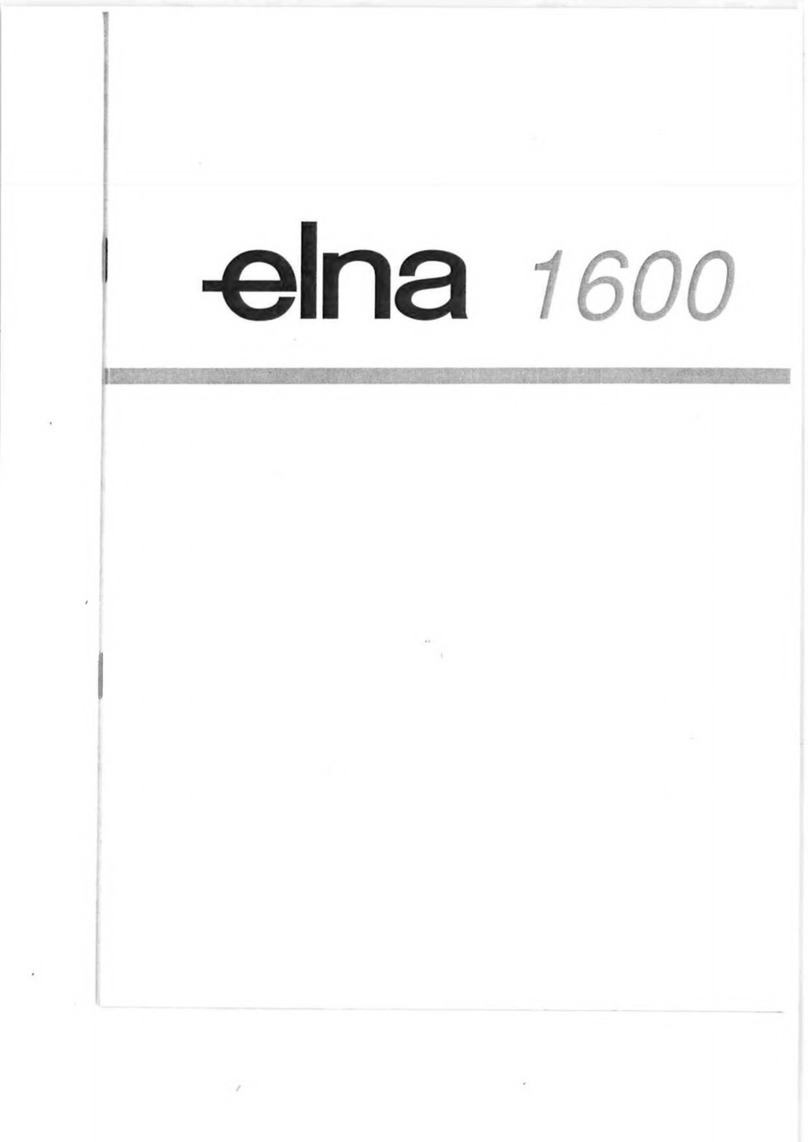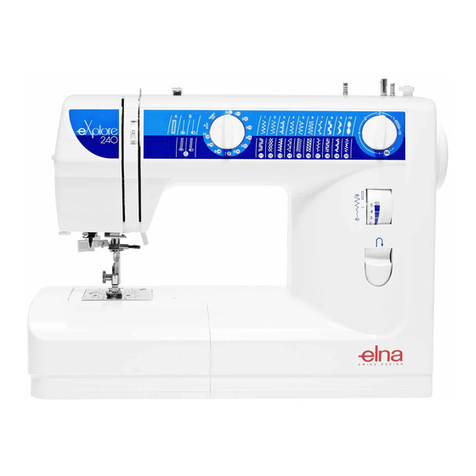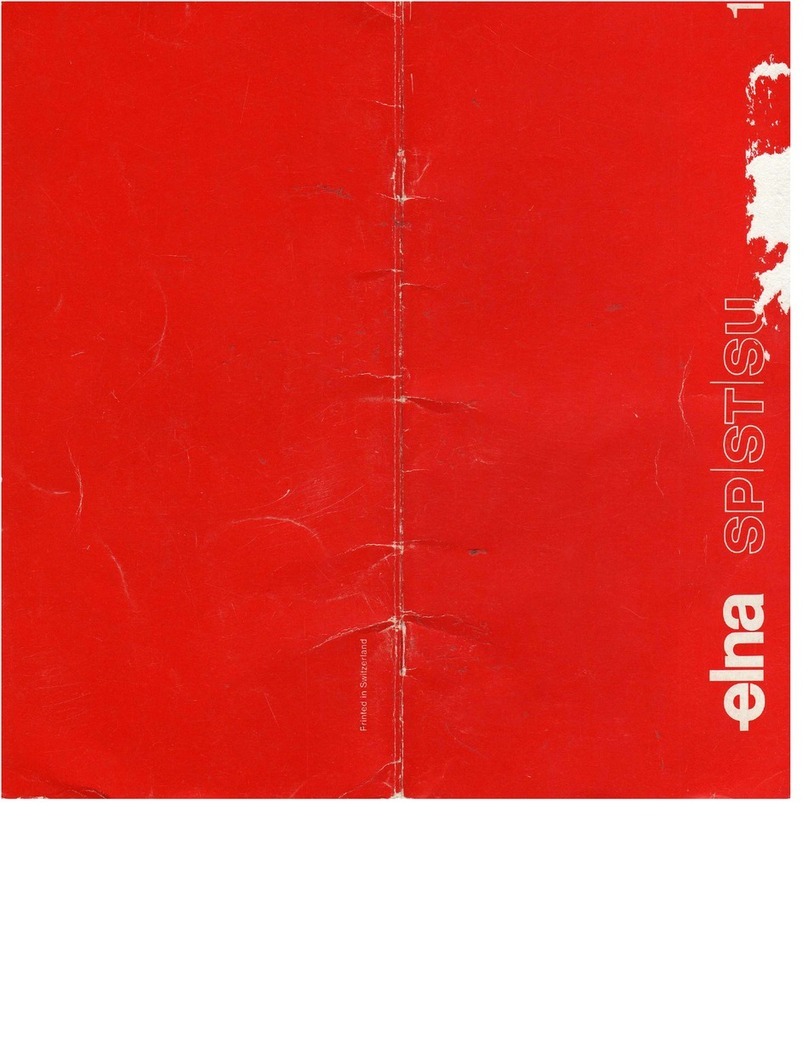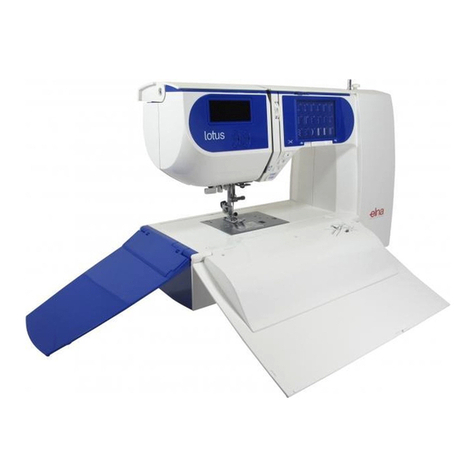
2
TABLE OF CONTENTS
ESSENTIAL PARTS
Names of Parts................................................................ 3
Standard Accessories...................................................... 4
Accessory Storage .......................................................... 5
Extension Table ............................................................... 5
Free-arm sewing.............................................................. 5
GETTING READY TO SEW
Connecting the Power Supply ......................................... 6
Operating Instructions: .................................................... 6
Controlling Sewing Speed ............................................... 7
Foot Control..................................................................... 7
Machine Operating Buttons............................................. 8
Touch Panel Keys............................................................ 9
Winding the Bobbin ....................................................... 10
Threading the Machine.................................................. 13
Built-in Needle Threader................................................ 14
Drawing up the Bobbin Thread...................................... 15
Replacing Needles ........................................................ 16
Fabric and Needle Chart ............................................... 16
Replacing the Presser Foot........................................... 17
Removing and Attaching the Foot Holder...................... 18
Attaching the Dual Feed Foot (Optional item) ............... 19
Attaching the Darning Foot PD-H.................................. 19
Attaching the Professional grade Foot HP
(Optional item)............................................................... 19
Replacing the Needle Plate........................................... 20
Retractable Sewing Light............................................... 21
Dropping the Feed Dog ................................................. 21
Raising and Lowering the Presser Foot ........................ 21
Knee Lifter (Optional item)............................................. 22
ORDINARY SEWING MODE
Ordinary Stitch Patterns ................................................ 23
Function Keys in Ordinary Sewing Mode ...................... 24
Utility Stitches................................................................ 26
Straight Stitches ............................................................ 26
Sewing from the Edge of Thick Fabric........................... 26
Changing Sewing Direction ........................................... 26
Turning a Square Corner............................................... 26
Securing Seams ............................................................ 27
Cutting Threads ............................................................. 27
Needle Plate Guides...................................................... 27
Variety of Straight Stitches ............................................ 28
Sewing with the Dual Feed Device................................ 29
Sewing with the Professional grade foot HP (Optional
item)............................................................................... 30
Zigzag Stitches.............................................................. 31
Variety of Overcasting Stitches...................................... 32
Manual Stitch Settings................................................... 33
Adjusting Thread Tension .............................................. 34
Adjusting Foot Pressure Control.................................... 34
Foot up for Pivoting ....................................................... 34
Favorite Stitch Adjustment............................................. 35
Other Utility Stitches...................................................... 36
Buttonholes and Specialty Stitches ............................... 38
Variety of Buttonholes.................................................... 38
B1 Sensor (Square) Buttonhole..................................... 39
Using the Stabilizer Plate .............................................. 43
B2 Automatic (Square) Buttonhole ................................ 44
Other Buttonholes.......................................................... 46
B11 Welted Buttonhole (Bound Buttonhole).................. 47
Corded Buttonhole......................................................... 49
Speciality Stitches ......................................................... 50
B13 Darning................................................................... 50
B15 Fly Stitch ................................................................ 51
B16-B18 Eyelets............................................................ 51
Decorative Stitches........................................................ 52
Quilting(Q) ..................................................................... 57
Using the Quilting Guide Bar (Optional item) ................ 57
Q1-Q3 Patchwork Piecing ............................................. 57
Angle Scales on the Needle Plate................................. 57
Circular Sewing ............................................................. 58
Circular Sewing Attachment .......................................... 58
Q71-Q74 Hand-look Quilt Stitches ................................ 59
S1-S24 Decorative Satin Stitches ................................. 60
Elongation Ratio ............................................................ 60
Created Stitches (CS).................................................... 61
Twin Needle Sewing ...................................................... 62
PROGRAMMING A PATTERN COMBINATION
Mirror Image of Patterns................................................ 63
Bridge Stitches .............................................................. 63
Editing a Pattern Combination....................................... 64
Deleting a Pattern.......................................................... 64
Inserting a Pattern ......................................................... 64
Startover Key................................................................. 65
Checking Pattern Combination Length.......................... 66
Monogramming.............................................................. 67
Function Keys................................................................ 67
Manual Thread Tension ................................................. 68
Individual Thread Tension Adjustment........................... 68
Unied Thread Tension Adjustment............................... 68
Spacing.......................................................................... 68
Reducing the Size of Letters ......................................... 68
Programming a Monogram............................................ 69
Saving a Pattern Combination....................................... 70
Opening a Pattern Combination .................................... 71
SEWING APPLICATION
Sewing Application ........................................................ 72
Seaming ........................................................................ 73
Overedge....................................................................... 74
Blind Hem...................................................................... 75
Shell Tuck ...................................................................... 76
Rolled Hem.................................................................... 77
Zipper Sewing................................................................ 78
Concealed Zipper Sewing (Optional item)..................... 81
Gathering....................................................................... 83
Basting........................................................................... 83
Button Sewing ............................................................... 84
Tacking .......................................................................... 85
Applique......................................................................... 86
Patchwork...................................................................... 87
Quilting .......................................................................... 88
Straight Stitches (with dual feed)................................... 88
Clasp Stitches................................................................ 88
Free Quilting.................................................................. 89
One Stitch Off................................................................ 89
Foot Height for Free Motion Quilting ............................. 89
Sculpture Stitches.......................................................... 89
Hand-look Quilt Stitches................................................ 90
Variable Zigzag.............................................................. 90
Maximum Zigzag Width Adjustment .............................. 90
CUSTOMIZING MACHINE SETTINGS
Machine Setting Mode................................................... 91
Common Setting Mode.................................................. 91
Ordinary Sewing Setting Mode...................................... 94
Language Selection Mode............................................. 97
Correcting Distorted Stitch Patterns .............................. 97
CARE AND MAINTENANCE
Cleaning the Hook Area................................................. 98
Problems and Warning Signals ..................................... 99
Troubleshooting........................................................... 100
Stitch Chart.................................................................. 101
EC DECLARATION OF CONFORMITY ...................... 105

